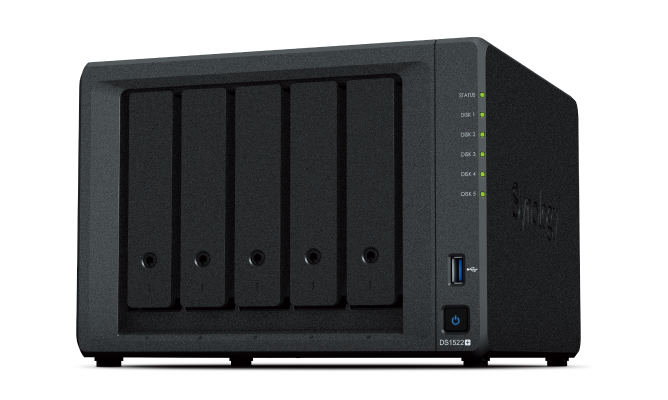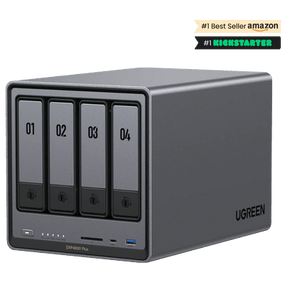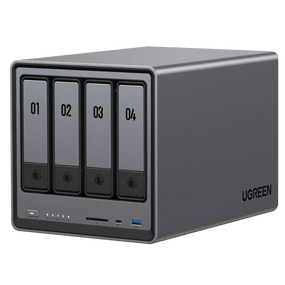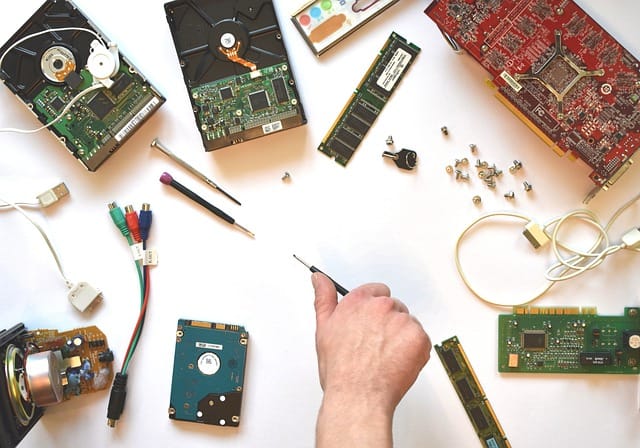Researching new hardware for a NAS/home server
This blog post is the documentation of results of my research on acquiring new hardware for a NAS/home server. I'm comparing some potential out-of-the-box NAS devices and DIY (do-it-yourself) solutions. During the research, I explored and read perhaps hundreds of conversation threads and watched a similar number of YouTube videos.
Current State
I've been using a Synology DS220+ NAS (2-bay) for over three years for file storage and as a home server. Setup has worked fine for storing files, photos, documents, Time Machine backups, and running various Docker containers. This is my second Synology NAS during the past six years. I have been really satisfied, especially with the Synology operating system (DSM) and its comprehensive capabilities. It's easy to use and everything just works. I love especially the Synology Container Manager, which is super for orchestrating different kinds of container applications.
I would say that the main functionality of this device is file storage. I'm using Synology Hybrid RAID (SHR), which is Synology's automated RAID management system. RAID is a technology that protects data by storing it across multiple hard disks, safeguarding against drive failures. This is crucial, because I don't want to lose important files of mine.
Overall, I was surprised how energy-efficient this Synology device actually is. It consumes about 12 W during idle and 18 W during load when two HDD disks are on board. I hope the new device is energy efficient, but I'm willing to make some compromises for better performance.
Current hardware resources of the DS220+ are inadequate, particularly for running many containerized applications simultaneously. Overall feeling is a bit sluggish, and everything just seems to take some time to load. I expanded the memory to 6 GB, but it's still not enough to run simultaneously Pi-hole, N8N, Portainer, Home Assistant, Vaultwarden, KeyCloak, Change Detection, Uptime Kuma, just mentioning a few. Just these containers are consuming over 70% of the memory all the time.
Another thing is that HDD disks are getting full, and the drives have been running for almost 30,000 hours. I am also searching for new HDDs.
Initial Requirements
Hardware
- Power-efficient hardware.
- Better overall CPU and memory performance.
- Using an SSD as a cache should be possible.
- Minimum of 4 disk bays.
- RAID support.
- Minimum 2.5 GB NIC.
- Up to 32 GB RAM; ECC support is a plus, but not a requirement.
- Compact size of the device.
- Future expandability is a plus.
Software
I need a secure and stable operating system that allows for disk encryption, cloud backups, Docker, app integrations, and Tailscale VPN, with minimal maintenance.
Out of the Box NAS devices
NAS 1: Synology DiskStation DS923+

2 x RJ-45 1GbE LAN ports
Price: ~650€ (03/2025)
Source: Synology
Pros
- 4 drive bays.
- Robust, high-quality device from a well-known manufacturer.
- Excellent, stable, and mature Synology DiskStation Manager operating system.
- Synology Hybrid RAID (SHR).
- Synology typically provides software and security updates for a certain long time.
- AMD Ryzen R1600 is pretty energy efficient (TDP of 25 W) and more than adequate for my use cases.
- 10Gb NIC available using an additional device (even though it is pretty expensive).
- Supports ECC (error-correcting code) memory RAM.
- Memory is expandable up to 32 GB.
- Two M.2 NVMe slots for SSD caching.
- Available directly from multiple resellers in Finland.
- Good resale value.
Cons
- By default, only 4 GB of RAM (ECC) is available.
- Only Synology-branded SSDs are officially supported. There's a workaround that requires manual scripting after each Synology OS update (source).
- Same for memory extensions: only Synology-branded SSDs are officially supported, but evidently certain other brands work as well (source).
- The AMD Ryzen R1600 CPU, released in 2020, is starting to feel a bit outdated.
- Limited hardware codec support on the CPU.
- NIC is 1 Gb by default.
- Price is okayish, but additional official memory and SSD massively increase the price.
NAS 2: Synology DiskStation DS1522+

4 x RJ-45 1GbE LAN ports
Price: ~750€ (03/2025)
Source: Synology
Pros and cons mentioned in DS923+ are also applicable for DS1522+, except for these:
Pros
- 5 drive bays.
- By default, 8 GB of RAM (ECC).
- Just an additional 100€ on top of the 923+.
Cons
- Older model than the 923+, but the hardware is the same.
NAS 3: UGREEN NASync DXP4800 Plus

Price: ~700€ (03/2025)
Source: Ugreen
Pros
- Intel Pentium Gold 8505 is a fairly new (Q1/2022) and very energy-efficient CPU with a TDP of 15 W (source).
- An adequate amount of DDR5 memory (8 GB) is already included by default.
- Memory is expandable up to 64 GB.
- Official operating system can be replaced with third-party ones such as Unraid, TrueNAS (source).
- 1 x 10Gb NIC.
- Two M.2 NVMe slots for SSD caching.
- HDMI port. Using an external monitor helps, especially if you want to install and configure a third-party operating system.
Cons
- New NAS device manufacturer.
- Ugreen operating system (UGOS) is evolving, and it has limited functionalities when compared to the Synology DSM.
- How long does Ugreen provide software and security updates?
- Extra work is needed to replace the official UGreen operating system with UnRAID or TrueNAS.
- No resellers in Finland.
NAS 4: UGREEN NASync DXP4800

Price: 500€ (03/2025)
Source: Ugreen
Pros and cons mentioned in the DXP4800 Plus are also applicable to the DXP4800, except for these:
Pros
- Intel N100 is a new (Q1/2023) and extremely energy-efficient CPU with a TDP of 6 W (source).
- Affordable price.
NAS 5: TERRAMASTER F4-424 Pro

Price: ~700€ (03/2025)
Source: Terramaster
Pros
- The Intel i3-N305 CPU is very powerful, 8 cores & 8 threads, and performance is 200% better than the AMD Ryzen R1600 (source).
- I3-N305 is a very energy-efficient CPU with a TDP of 15 W (source).
- Wide hardware codec support.
- A good amount of DDR5 memory (16 GB) is already included by default.
- HDMI port. Using an external monitor helps, especially if you want to install and configure a third-party operating system.
- Two M.2 NVMe slots for SSD caching.
- Official operating system can be replaced (source).
Cons
- New NAS device manufacturer.
- How long does Terramaster provide software and security updates?
- Extra work is needed to replace the official TerraMaster operating system with UnRAID or TrueNAS.
- Replacement of TOS (TerraMaster Operating System) might void the warranty. Found some discussions and videos about this, but I cannot confirm it.
- Does not support ECC memory and is non-upgradeable.
- No resellers in Finland.
NAS 6: AOOSTAR WTR PRO
Price: ~500€ (03/2025)
Source: Aoostar
Pros
- Intel N100 is a new (Q1/2023) and extremely energy-efficient CPU with a TDP of 6 W (source).
- Affordable price.
- Can be purchased with or without memory and an additional SSD disk.
- It's just hardware; you can decide on the operating system yourself.
Cons
- Unfamiliar manufacturer, at least to me.
- Quality of the device?
- No resellers in Finland.
- Short warranty, 12 months (source).
Do-It-Yourself NAS devices

There are clear advantages to assembling the NAS/home server device yourself. You can choose exactly the hardware you need and want. It can be time-consuming, labor-intensive, frustrating, and challenging, but the end result can be worth it if you are willing to compromise. The biggest benefit of a DIY approach is that you can create a more future-ready solution with potentially extensible capabilities. Pre-built NAS devices seldom provide that.
At the beginning of this research, I was enthusiastic and ready to build the DIY device. It's been about four years since I assembled the PC myself, so I thought now would be the time.
I started to investigate building the device on top of either an Intel N100 or an Intel N305 processor. Those processors are pretty new, powerful, and extremely energy-efficient. It is no coincidence that most NAS manufacturers are using those processors in their devices. There is also available the Intel I3-N100/N305 series, which provides even more performance with multiple CPU cores/threads.
I soon noticed that there aren't many options available in the Intel N100/N305 series from reputable manufacturers (03/2025). You will discover a wider range of options from lesser-known manufacturers, such as Topton and CWWK, which are selling their products via AliExpress. Buying products from lesser-known manufacturers without knowing how warranty processes and other things work was a stopper for me.
From the known manufacturers, I found that ASRock and Asus have Intel N100-based products, but not really for the N305. N100 would be good enough for my purpose, so I started to investigate those options further. ASRock N100M and Asus Prime N100 actually have very limited expandability, which is problematic. Typically, in a NAS device, you want to attach multiple HDDs, and therefore you need multiple SATA ports. To enable this with these products, you need to purchase additional PCIe-based adapters.
This DIY planning project has become overwhelming and time-consuming, so I decided to take a break. Too many moving parts.
Next steps
I decided to defer the decision 😄. I discovered during the research that the old DS220+ can actually support up to 20 GB of memory, despite its specifications stating a maximum of 6 GB. Therefore, I decided to order one additional 16 GB RAM module and new HDDs. Hopefully, I can buy more time with these acquisitions.
Overall, I prefer easy and maintenance-free solutions, so I am tempted to use ready-made NAS products also in the future. I don't want to use my free time fixing and adjusting NAS configurations. I think, if I build the DIY solution, it will be exactly that. I've been happy with Synology devices and software, so I will likely get another Synology device in the future.

Comments